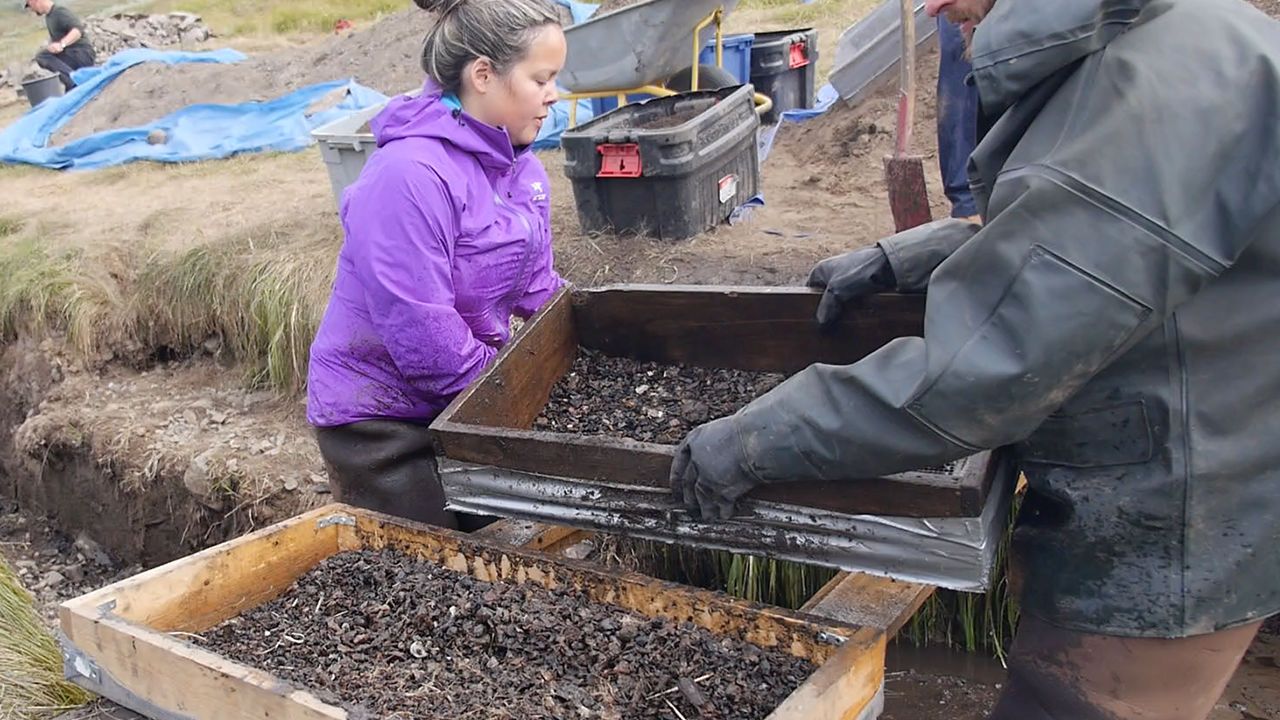One warm afternoon at an ancient Norse site, now a modern Inuit sheep farm, archaeology graduate student Michael Nielsen lay on his stomach, contentedly sorting through thousands of tiny rocks and bones seeking artifacts. For archaeologists at a dig, the painstaking work known as picking is an everyday routine. What's unusual, however, is Nielsen's background: He is a native Greenlander.
"I just love the artifacts," he says. For Nielsen, born in the nearby town of Narsaq, an infatuation with archaeology started "from the first minute" he began working on a dig 3 years ago. Then an undergraduate at the University of Greenland in Nuuk, he enjoyed the physicality of the work. And the waves of occupation in Greenland—ancient indigenous populations who arrived then disappeared, followed by the Norse, and finally the Inuit—captured his interest.
Yet even as researchers comb Greenland for clues to the Norse disappearance, only a handful of homegrown archaeologists are on hand to help; most research is done by outsiders from Denmark or other Western countries. The paucity of local experts may explain why much of the island's rich record has been overlooked, with hundreds of known archaeological sites unexcavated. "Having more homegrown archaeologists would be very important for Greenland so that they can set their own priorities," says Konrad Smiarowski, a graduate student at the City University of New York in New York City who leads the dig here. "The sites that have been excavated are those that the international community has prioritized, but you could see Greenlandic scientists targeting other ones, for example sites that are at risk of loss from climate change."
For now, budding archaeologists like Nielsen face challenges. The University of Greenland doesn't have an archaeology department. And parents and policymakers have other priorities, Nielsen says. "People want Greenlandic students to become doctors and lawyers."
All the same, "it's important for us to make our own research and write our own history," says Greenlander Mari Kleist, who got her Ph.D. in archaeology in Denmark in 2013 and is now based in Brussels. Both she and Nielsen intend to one day publish on Greenland archaeology in Greenlandic, an Inuit tongue. "Greenlanders don't know much about archaeology," Nielsen says. "I'd want to tell people about the prehistory of Greenland, the Norse, and the Inuit."
